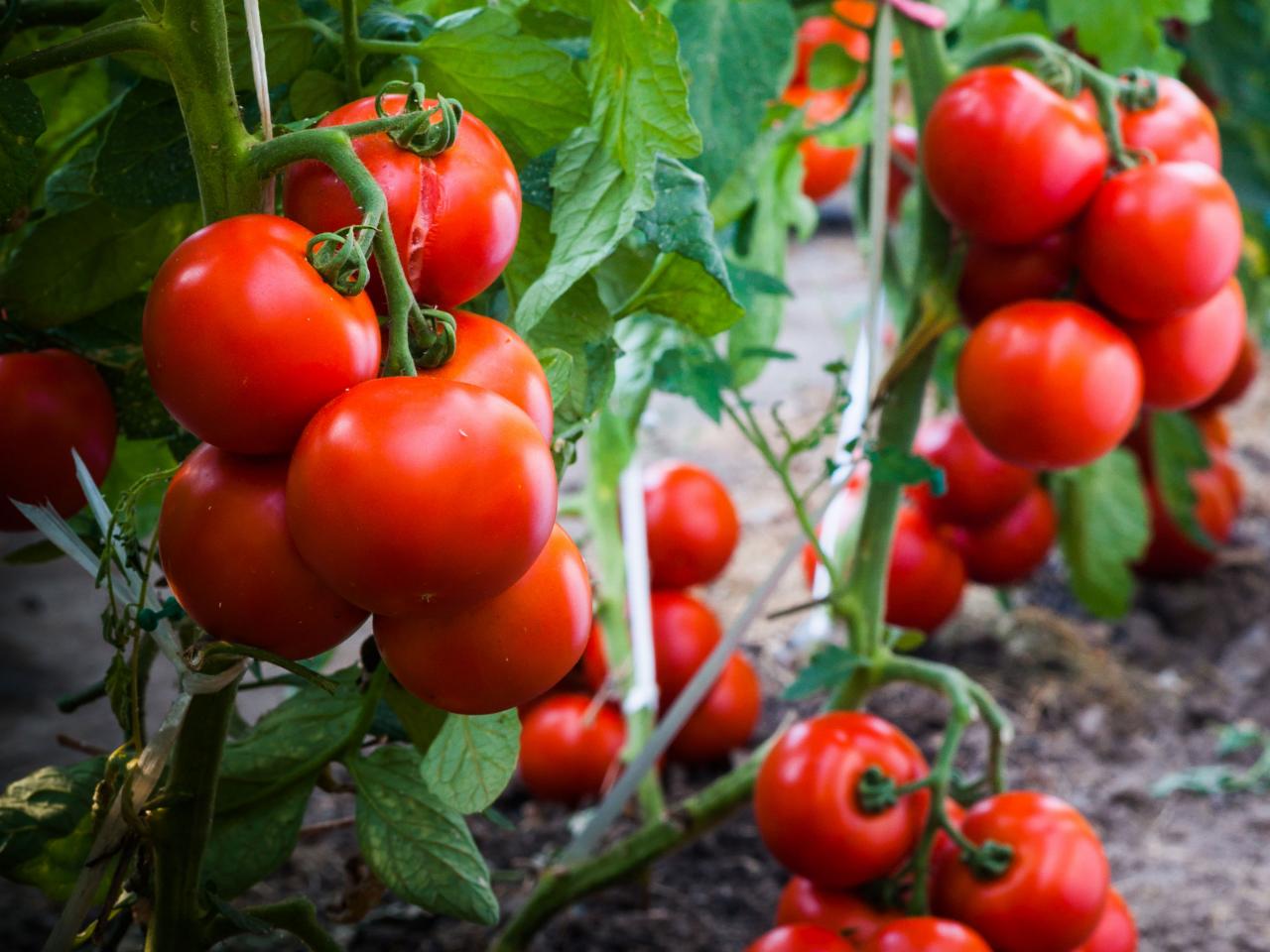GIẢI CHI TIẾT ĐỀ THI IELTS READING:
A second attempt at domesticating the tomato
A
It took at least 3,000 years for humans to learn how to domesticate the wild tomato and cultivate it for food. Now two separate teams in Brazil and China have done it all over again in less than three years. And they have done it better in some ways, as the re-domesticated tomatoes are more nutritious than the ones we eat at present.
Mất ít nhất 3000 năm để con người học cách thuần hóa cà chua dại và trồng nó để làm thức ăn. Ngày nay hai nhóm riêng lẻ ở Brazil và China đã thực hiện lại toàn bộ việc này trong chưa đến ba năm. Và họ thực hiện việc đó tốt hơn theo một số cách vì cà chua tái thuần hóa có nhiều dinh dưỡng hơn những trái cà chua mà chúng ta đang ăn hiện nay.
This approach relies on the revolutionary CRISPR genome editing technique, in which changes are deliberately made to the DNA of a living cell, allowing genetic material to be added, removed or altered. The technique could not only improve existing crops but could also be used to turn thousands of wild plants into useful and appealing foods. In fact, a third team in the US has already begun to do this with a relative of the tomato called the groundcherry.
Cách tiếp cận này dựa vào kỹ thuật chỉnh sửa mang tính cách mạng bộ gen CRISPR mà trong đó các thay đổi được thực hiện có chủ đích đối với DNA của một tế bào sống cho phép thêm vào, loại bỏ hoặc thay đổi chất liệu di truyền. Kỹ thuật này không chỉ cho phép cải thiện các cây trồng hiện tại mà còn được dùng để biến hàng ngàn thực vật hoang dại thành thực phẩm hấp dẫn và hữu ích. Thực tế, một nhóm thức ba ở Mỹ đã bắt đầu làm điều này với họ hàng của cây cà chua gọi là cây tầm bóp (bùm bụp) .
This fast-track domestication could help make the world’s food supply healthier and far more resistant to diseases, such as the rust fungus devastating wheat crops.
Sự thuần hóa nhanh chóng này có thể giúp làm cho nguồn cung cấp thực phẩm trên thế giới lành mạnh hơn và chống chịu tốt hơn với các loại bệnh như là nấm thối gỉ sét tàn phá cây lúa mì.
‘This could transform what we eat,’ says Jorg Kudla at the University of Munster in Germany, a member of the Brazilian team. ‘There are 50,000 edible plants in the world, but 90 percent of our energy comes from just 15 crops.’
Jorg Kudla tại Đại học Munster Đức, một thành viên của nhóm Brazil nói "Điều này có thể biến đổi những thứ mà chúng ta ăn" " Có 50000 cây trồng có thể ăn được trên thế giới nhưng 90% năng lượng của chúng ta là từ 15 cây trồng"
‘We can now mimic the known domestication course of major crops like rice, maize, sorghum or others,’ says Caixia Gao of the Chinese Academy of Sciences in Beijing. ‘Then we might try to domesticate plants that have never been domesticated.’
Caixia Gao của Viên khoa học Trung Quốc tại Bắc Kinh nói "Chúng ta bây giờ có thể bắt chước theo quá trình thuần hóa của các cây trồng chính như gạo, bắp, lúa miến và những cây khác". " Sau đó chúng ta có thể cố gắng thuần hóa các cây trồng mà chúng ta chưa bao giờ thuần hóa"
B
Wild tomatoes, which are native to the Andes region in South America, produce pea-sized fruits. Over many generations, peoples such as the Aztecs and Incas transformed the plant by selecting and breeding plants with mutations* in their genetic structure, which resulted in desirable traits such as larger fruit.
But every time a single plant with a mutation is taken from a larger population for breeding, much genetic diversity is lost. And sometimes the desirable mutations come with less desirable traits. For instance, the tomato strains grown for supermarkets have lost much of their flavour.
By comparing the genomes of modern plants to those of their wild relatives, biologists have been working out what genetic changes occurred as plants were domesticated. The teams in Brazil and China have now used this knowledge to reintroduce these changes from scratch while maintaining or even enhancing the desirable traits of wild strains.

1. Mua bộ đề gần 400 bài ielts reading - Dịch và giải chi tiết Chỉ 199k bao gồm toàn bộ đề trong bộ Cambridge ( từ bộ 1 -19) và nhiều đề thi thực tế ( xem danh sách 400 đề ielts reading tại đây). Xem bài mẫu tại đây, Bài mẫu 1, bài mẫu 2, bài mẫu 3. Giải đề bao gồm phần dịch bài đọc, dịch phần câu hỏi, giải thích chi tiết, ( chỉ có thể tải, in phần đề để luyện tập, phần giải chi tiết và dịch chỉ xem online).
>>>> >>>> Đặc biệt tặng kèm Dịch và giải chi tiết bộ đề Ielts listening từ Cam 10-18 và tặng kèm hơn 300 đề Ielts thực tế ( không có lời giải chi tiết chỉ có đề và đáp án) ( khác với bộ 400 đề ở trên). Vui lòng điền thông tin theo form tại đây và thanh toán theo thông tin CK trong form.
2. Đặc biệt dành tặng 100 bạn hoàn thành buổi học thử miễn phí khóa học Ielts Speaking online 1 kèm 1, các bạn sẽ được tặng bộ đề 400k bài Ielts reading và bộ đề Ielts Listening bộ Cam từ 10-18 gồm bài dịch và giải chi tiết, giải thích từ vựng khó ( thời hạn sử dụng trong vòng 2 tháng). Xem thông tin khóa học Ielts Speaking online 1 kèm 1 và đăng ký học thử tại đây.
C
Kudla’s team made six changes altogether. For instance, they tripled the size of fruit by editing a gene called FRUIT WEIGHT, and increased the number of tomatoes per truss by editing another called MULTIFLORA.
Nhóm của Kudla đã thực hiện sáu thay đổi tổng cộng. Ví dụ, họ đã tăng gấp ba lần kích cỡ của quả bằng cách chỉnh sửa một gen tên là FRUIT WEIGHT và làm tăng số lượng cà chua trên mỗi giàn bằng cách chỉnh sửa một loại gen khác gọi là MULTIFLORA.
While the historical domestication of tomatoes reduced levels of the red pigment lycopene – thought to have potential health benefits – the team in Brazil managed to boost it instead. The wild tomato has twice as much lycopene as cultivated ones; the newly domesticated one has five times as much. ‘They are quite tasty,’ says Kudla. ‘A little bit strong. And very aromatic.’
Trong khi việc thuần hóa cà chua trong lịch sử đã giảm mức độ sắc đố đỏ lycopene - được cho là có lợi ích tiềm năng cho sức khỏe - thay vào đó nhóm ở Braxil đã xoay sở để đẩy mạnh sắc tố đỏ này. Cà chua dại có gấp đôi sắc tố lycopene so với những cây được trồng; một loại mới được thuần hóa có gấp năm lần lycopene như vậy. Kudla nói " Chúng khá là ngon". " Hơi hăng một chút và rất thơm".
The team in China re-domesticated several strains of wild tomatoes with desirable traits lost in domesticated tomatoes. In this way, they managed to create a strain resistant to a common disease called bacterial spot race, which can devastate yields. They also created another strain that is more salt tolerant – and has higher levels of vitamin C.
Nhóm ở Trung quốc đã tái thuần hóa vài giống cây cà chua dại có những đặc điểm mong muốn bị mất đi trong những cây cà chua bị thuần hóa. Bằng cách này họ đã xoay sở để tạo ra một giống chống lại một căn bệnh phổ biến gọi là bệnh đốm lá có thể phá hoại sản lượng. Họ cũng đã tạo ra một giống khác chịu mặn hơn và có mức vitamin C cao hơn.
D
Meanwhile, Joyce Van Eck at the Boyce Thompson Institute in New York State decided to use the same approach to domesticate the groundcherry or goldenberry (Physalis pruinosa) for the first time. This fruit looks similar to the closely related Cape gooseberry (Physalis peruviana).
Groundcherries are already sold to a limited extent in the US but they are hard to produce because the plant has a sprawling growth habit and the small fruits fall off the branches when ripe. Van Eck’s team has edited the plants to increase fruit size, make their growth more compact and to stop fruits dropping. ‘There’s potential for this to be a commercial crop,’ says Van Eck. But she adds that taking the work further would be expensive because of the need to pay for a licence for the CRISPR technology and get regulatory approval.
E
This approach could boost the use of many obscure plants, says Jonathan Jones of the Sainsbury Lab in the UK. But it will be hard for new foods to grow so popular with farmers and consumers that they become new staple crops, he thinks.
The three teams already have their eye on other plants that could be ‘catapulted into the mainstream’, including foxtail, oat-grass and cowpea. By choosing wild plants that are drought or heat-tolerant, says Gao, we could create crops that will thrive even as the planet warms.
But Kudla didn’t want to reveal which species were in his team’s sights, because CRISPR has made the process so easy. ‘Any one with the right skills could go to their lab and do this.’
———————-
* mutations: changes in an organism’s genetic structure that can be passed down to later generations
>>>>>Xem thêm:
♦ Tổng hợp câu trả lời, câu hỏi, từ vựng của hơn 70 chủ đề Ielts Speaking part 1
♦ Tổng hợp gần 400 đề thi Ielts reading ( bao gồm dịch, giải chi tiết, từ vựng)
Questions 14-18
Reading Passage 2 has five paragraphs, A-E.
Which section contains the following information?
Write the correct letter, A-E, in boxes 14-18 on your answer sheet.
NB You may use any letter more than once.
14 a reference to a type of tomato that can resist a dangerous infection.
15 an explanation of how problems can arise from focusing only on a certain type of tomato plant.
16 a number of examples of plants that are not cultivated at present but could be useful as food sources.
17 a comparison between the early domestication of the tomato and more recent research
18 a personal reaction to the flavour of a tomato that has been genetically edited
Look at the following statements (Questions 19-23) and the list of researchers below.
Match each statement with the correct researcher, A-D.
Write the correct letter, A-D, in boxes 19-23 on your answer sheet.
NB You may use any letter more than once.
19 Domestication of certain plants could allow them to adapt to future environmental challenges.
20 The idea of growing and eating unusual plants may not be accepted on a large scale.
21 It is not advisable for the future direction of certain research to be made public.
22 Present efforts to domesticate one wild fruit are limited by the costs involved.
23 Humans only make use of a small proportion of the plant food available on Earth.
|
List of Researchers A Jorg Kudla B Caixia Gao C Joyce Van Eck D Jonathan Jones |
Complete the sentences below.
Choose ONE WORD ONLY from the passage for each answer.
Write your answers in boxes 24-26 on your answer sheet.
24 An undesirable trait such as loss of ……………………… may be caused by a mutation in a tomato gene.
25 By modifying one gene in a tomato plant, researchers made the tomato three times its original ………………………
26 A type of tomato which was not badly affected by ………………………, and was rich in vitamin C, was produced by a team of researchers in China.
ĐÁP ÁN VÀ GIẢI CHI TIẾT ĐỀ THI IELTS READING:
A second attempt at domesticating the tomato
Questions 14-18
Reading Passage 2 has five paragraphs, A-E.
Which section contains the following information?
Write the correct letter, A-E, in boxes 14-18 on your answer sheet.
NB You may use any letter more than once.
14C a reference to a type of tomato that can resist a dangerous infection.
Một đề cấp đến loại cà chua có thể chống lại một bệnh nhiễm trùng
Giải thích: đoạn C có đề cập loại cà chua chống lại bệnh đốm lá
The team in China re-domesticated several strains of wild tomatoes with desirable traits lost in domesticated tomatoes. In this way they managed to create a strain resistant to a common disease called bacterial spot race, which can devastate yields. They also created another strain that is more salt tolerant – and has higher levels of vitamin C.
15B an explanation of how problems can arise from focusing only on a certain type of tomato plant.
Một lời giải thích về cách mà các vấn đề có thể phát sinh từ việc chỉ tập trung vào một loại cây cà chua nhất định
Giải thích: đoạn B, mất đi tính đa dạng di truyền
But every time a single plant with a mutation is taken from a larger population for breeding, much genetic diversity is lost. And sometimes the desirable mutations come with less desirable traits. For instance, the tomato strains grown for supermarkets have lost much of their flavour.
Look at the following statements (Questions 19-23) and the list of researchers below.
Match each statement with the correct researcher, A-D.
Write the correct letter, A-D, in boxes 19-23 on your answer sheet.
NB You may use any letter more than once.
19B Domestication of certain plants could allow them to adapt to future environmental challenges.
Thuần hóa những loài cây nhất định có thể cho phép chúng thích nghi với những thay đổi môi trường tương lai.
Giải thích: đoạn E, Gao
The three teams already have their eye on other plants that could be ‘catapulted into the mainstream’, including foxtail, oat-grass and cowpea. By choosing wild plants that are drought or heat tolerant, says Gao, we could create crops that will thrive even as the planet warms.
20D The idea of growing and eating unusual plants may not be accepted on a large scale.
Ý tưởng trồng và ăn những cây lạ không được chấp nhận trên quy mô rộng
Giải thích: đoạn E, Jonathan Jones
This approach could boost the use of many obscure plants, says Jonathan Jones of the Sainsbury Lab in the UK. But it will be hard for new foods to grow so popular with farmers and consumers that they become new staple crops, he thinks
Complete the sentences below.
Choose ONE WORD ONLY from the passage for each answer.
Write your answers in boxes 24-26 on your answer sheet.
24 An undesirable trait such as loss of ………flavour……………… may be caused by a mutation in a tomato gene.
Một đặt điểm không mong muốn như mất hương vị có thể do biến đổi gen trong một loại cà chua gây nên
Giải thích: đoạn B
But every time a single plant with a mutation is taken from a larger population for breeding, much genetic diversity is lost. And sometimes the desirable mutations come with less desirable traits. For instance, the tomato strains grown for supermarkets have lost much of their flavour.

1. Mua bộ đề gần 400 bài ielts reading - Dịch và giải chi tiết Chỉ 199k bao gồm toàn bộ đề trong bộ Cambridge ( từ bộ 1 -19) và nhiều đề thi thực tế ( xem danh sách 400 đề ielts reading tại đây). Xem bài mẫu tại đây, Bài mẫu 1, bài mẫu 2, bài mẫu 3. Giải đề bao gồm phần dịch bài đọc, dịch phần câu hỏi, giải thích chi tiết, ( chỉ có thể tải, in phần đề để luyện tập, phần giải chi tiết và dịch chỉ xem online).
>>>> >>>> Đặc biệt tặng kèm Dịch và giải chi tiết bộ đề Ielts listening từ Cam 10-18 và tặng kèm hơn 300 đề Ielts thực tế ( không có lời giải chi tiết chỉ có đề và đáp án) ( khác với bộ 400 đề ở trên). Vui lòng điền thông tin theo form tại đây và thanh toán theo thông tin CK trong form.
2. Đặc biệt dành tặng 100 bạn hoàn thành buổi học thử miễn phí khóa học Ielts Speaking online 1 kèm 1, các bạn sẽ được tặng bộ đề 400k bài Ielts reading và bộ đề Ielts Listening bộ Cam từ 10-18 gồm bài dịch và giải chi tiết, giải thích từ vựng khó ( thời hạn sử dụng trong vòng 2 tháng). Xem thông tin khóa học Ielts Speaking online 1 kèm 1 và đăng ký học thử tại đây.
ĐÁP ÁN:
14 C
15 B
16 E
17 A
18 C
19 B
20 D
21 A
22 C
23 A
24 flavour / flavor
25 size
26 salt

.png)





